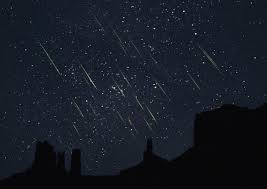American Astronomer, Andrew Elliott Douglass, witnesses the Leonids meteor shower from a ship off the Florida Keys.
Douglass wrote in his journal that the ‘ whole heaven appeared as if illuminated with sky rockets, flying in an infinity of directions, and I was in constant expectation of some of them falling on the ship. They continued until put out by the light of the sun after day-break’.
This journal entry is the first record of a Meteor Shower.
The Leonids meteor shower is an annual event that is vastly enhanced every 33 years (approximately) by the appearance of the comet ‘Tempel Tuttle’. When this particular comet is seen, the Leonids can produce rates of several thousand meteors per hour – this lights up the sky on a clear night.
Douglass again witnessed the Leonids shower, and the return of the comet Temple Tuttle in 1833 – this is accredited as the first organised study of meteor astronomy.
by David Livingstone


